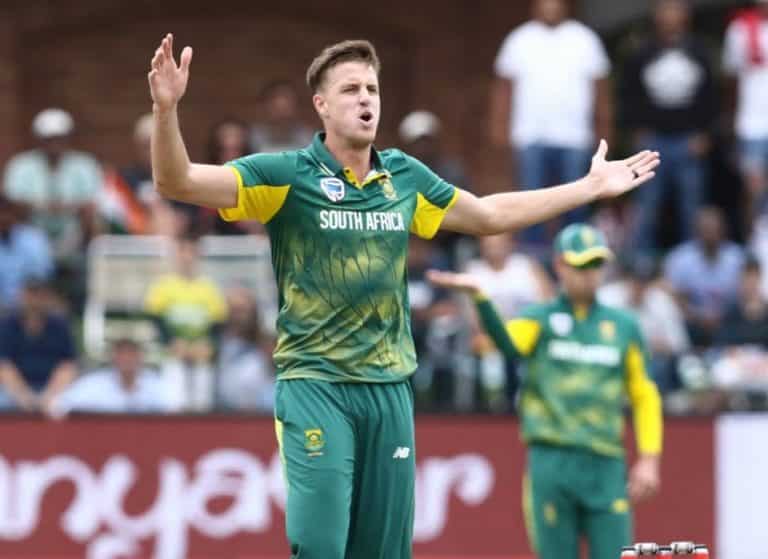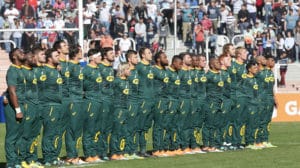The Proteas bowlers disappointed as much as the batsmen in the humiliating 5-1 series defeat to India.
Is there any way back from here?
I asked this question after the Proteas lost their third successive ODI match against India a couple of weeks ago. I asked this question in the context of the six-game series, which has since ended 5-1 in India’s favour.
I now ask the question in the context of South Africa’s World Cup prospects. The Proteas were absolutely hammered by India on the batting and bowling fronts in the recent series, and at home to boot. When one considers the personnel available, and that the global tournament commences in May 2019, one has to wonder how much will actually change over the next 15 months or so.
The Proteas were absolutely dire across the six ODIs. Some of the pitches came in for criticism after the first few matches, with some alleging that the tracks were better suited to the India batsmen and the visitors’ spin bowlers. Credit to the local players and coaches, though, for some of them were brave enough to speak the truth. South Africa simply weren’t good enough.
Yes, the Proteas suffered some significant losses in personnel. Yes, they should be stronger when Faf du Plessis, AB de Villiers, and Quinton de Kock are all fit and available for the duration of a series or tournament.
That said, the Proteas have had their batting problems – even with such batsmen in tow – over the past few seasons. What’s more, the series against India highlighted an inconvenient truth: the Proteas don’t have a lot of quality in depth.
More on the batting later. It can and should improve when Du Plessis and De Kock return, assuming the latter finds form sooner rather than later. Whether those players, and De Villiers, can steer South Africa to World Cup glory, of course, remains to be seen.
Let’s talk about the bowling. Let’s look at how the individuals and the attack as an unit performed against a side that is now ranked No 1 in ODIs.
Let’s also remember that this attack can’t be improved a great deal as far as personnel is concerned. Dale Steyn may be back for the 2019 World Cup, but even at his best, he is only one man.
The India wrist-spinners combined to take 33 wickets (at an average of 15) across the six matches against South Africa. The seamers also deserve credit, though, with Jasprit Bumrah averaging 20.84 along with the likes of Hardik Pandya and most recently Shardul Thakur making important contributions.
Yuzvendra Chahal and Kuldeep Yadav will receive most of the plaudits. The truth is that all of India’s bowlers should be commended for a performance that saw South Africa limited to 207 or less on five occasions. India bowled the hosts out inside the allotted overs four times.
Are the Proteas’ bowlers exempt from criticism? Some might say that they were always under pressure given the shocking performances by the batsmen. However, there was an even split across the six-game series in the sense that the Proteas set a total on three occasions, and chased a target on three others.
It’s plain to see that the bowlers have to accept some responsibility. Indeed, Ottis Gibson should be a worried man when he looks at the wickets column at the end of the series. South Africa claimed 27 wickets out of a possible 60, and four of those were run-outs.
Clearly there is a problem in the bowling department.
The top wicket-taker for South Africa in the series? Lungi Ngidi, who debuted in the third match in Cape Town, finished with eight scalps.
What about Morne Morkel, the senior player in the attack? What about Kagiso Rabada, the player who felt it prudent to give Indian batsmen a big send-off?
How about Imran Tahir? That’s right, the No 1-ranked ODI bowler in the world is a leg-spinner from South Africa. How did he fare against some of the best players of spin on the planet?
Rabada took five wickets and Morkel two. Tahir went for less than six runs an over, but only claimed one wicket.
The senior bowlers certainly didn’t fire in this series, and this must be a cause for concern a year out from the World Cup. The India batsmen will fancy their chances when facing up to this attack in English conditions a year down the line.
The bowlers conceded 53 wides in six games. There were times when the India batsmen were put under pressure at the death of an innings. Up front and throughout the middle overs, however, India were rarely troubled.
The top-three run-scorers in the series were from India. Virat Kohli and Shikhar Dhawan were particular successful, as individuals and as a combination. India amassed five 100-plus partnerships, and three more in excess of 50, for the first five wickets across the six matches.
This allowed the visitors to set a platform. The Proteas bowlers didn’t ask enough questions of these players.
South Africa, by comparison, simply failed to get going at the top of the order. I agree with those who suggest that the Proteas can’t push forward with three genuine No 11s – Morkel, Tahir, and Ngidi – at 9, 10, and 11. The fact remains, however, that the lack of substantial partnerships and individual contributions from the top and middle-order is putting the rest of the side under pressure.
There were no partnerships of 100 or more across the six games against India. There were a total of 30 partnerships before the fall of the fifth wicket. The Proteas managed a stand of 50 or more on just six occasions.
The Proteas’ struggles against the spin of Chahal and Kuldeep is emphasised by the stats. Again, how is Gibson or batting guru Dale Benkenstein going to address this in the lead-up to the World Cup? South Africa are going to have to combat spin sooner or later if they want to win the tournament.
The India wrist-spinners dismissed a total of 20 top-six batsmen over the recent six-game series. That’s 20 out of the spinners’ total 33 victims. If we’re counting Chris Morris and Andile Phehlukwayo as all-rounders, and thus recognised batsmen, that number of victims climbs from 20 to 26.
Perhaps the return of Du Plessis will aid the Proteas in this regard. The skipper scored 120 in the first game before missing the rest of the series due to injury. Du Plessis is one of the best players of spin in the game.
The averages of the other established batsmen in this series don’t make for encouraging reading, though. Hashim Amla (25.66), David Miller (21.40), Aiden Markram (21.16), De Villiers (20.66), and JP Duminy (19.80) all batted in three innings or more. Of that group, Amla and Duminy were the only players to score half-centuries (one apiece). None of those batsmen will remember this series with any fondness.
Which brings us to back the question. What can South Africa really do to lift their form and confidence, with the bat and the ball, between now and the World Cup?
It may be awhile yet before we get any response on the ODI front. The focus will shift to the T20Is against India next week, and then to the Tests against Australia ahead of the first match in early March.
Nevertheless, these are issues that need to be addressed if the Proteas are to be more than also-rans at the next World Cup.
Photo: Richard Huggard/Gallo Images





